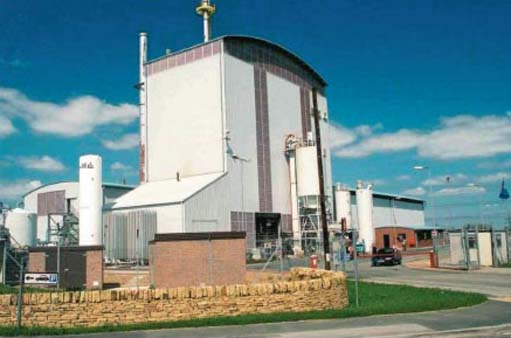3.3 Bioenergy
Not all fuel sources are, of course, of fossil or nuclear origin. From prehistoric times, human beings have harnessed the power of fire by burning wood to create warmth and light and to cook food.
Wood is created by photosynthesis in the leaves of plants. Photosynthesis is a process powered by solar energy in which atmospheric carbon dioxide and water are converted into carbohydrates (compounds of carbon, oxygen and hydrogen) in the plant's leaves and stems. These, in the form of wood or other 'biomass', can be used as fuels – called biofuels, which are sources of bioenergy.
Wood is still very widely used as a fuel in many parts of the 'developing' world. In some countries, other biofuels such as animal dung (ultimately also derived from the growth of plants) are also used. As described in Box 1, such traditional biofuels are estimated to supply some 11 per centof world primary energy, though the data are somewhat uncertain.
If the forests that provide wood fuel are re-planted at the same rate as they are cut down, then such fuel use should in principle be sustainable. When forests are managed sustainably in this way, the CO2 absorbed in growing replacement trees should equal the CO2 given off when the original trees are burned. However, this is only true when complete combustion of the wood occurs and all the carbon in the wood is released as carbon dioxide. Although near-complete combustion can be achieved in the best available wood stoves and furnaces, most open fires and stoves are not so efficient. This means that not only is carbon dioxide released (albeit in somewhat smaller quantities if the combustion is incomplete) but other combustion products are also emitted, some of which are more powerful greenhouse gases than CO2. In particular, these can include methane, which on a molecule-for-molecule basis has 20 times the global warming potential of CO2 over a 20-year-period. The incomplete combustion of wood can therefore release a mixture of greenhouse gases with a greater overall global warming effect than can be offset by the CO2 absorbed in growing replacement trees. This suggests an urgent need to improve the efficiency of traditional wood-burning processes (Smith et al., 2000). However it should be stressed that the overall global effect of greenhouse gas emissions arising from incomplete biomass combustion in developing countries is probably much less than that of emissions from burning fossil fuels, which occurs mostly in the 'developed' countries.
A further problem is that in many 'developing' countries wood fuel is being used at a rate that exceeds its re-growth, which is not only unsustainable but also results in villagers having to travel ever-increasing distances, often involving great hardship, to gather sufficient firewood for their daily needs. Also, when it has been gathered, firewood is often burned very inefficiently in open fires – as was the case in Britain and many other 'developed' countries until quite recently. This not only results in excess greenhouse gas emissions, as we have seen, but also gives much less effective warmth than if an efficient stove were used. Moreover, it usually results in high levels of smoke pollution, with very detrimental health effects.
Not all bioenergy use is in the form of traditional biofuels. As noted in Box 1, a significant contribution to world supplies now comes from so-called 'modern' bioenergy power plants. These feature the clean, high-efficiency combustion of straw, forestry wastes or wood chips from trees grown in special plantations. The heat produced is either used directly or for electricity generation, or sometimes for both purposes.

Municipal wastes, a large proportion of which are biological in origin, are also widely used for heat or electricity production. However, there is considerable controversy over whether or not energy from waste should be regarded as 'sustainable'. Waste-to-energy plants have been opposed by some environmental groups on the grounds that, in order to be economically viable, they need to be fed with a steady stream of waste over many years, which discourages better solutions to the waste problem, such as material re-use or recycling. There are further concerns over possible emissions of dioxins, which are carcinogenic, from the combustion of chlorine compounds present in municipal waste.
Another modern source of bioenergy is alcohol (ethanol) produced by fermenting sugar cane or maize, which is quite widely used in vehicles in Brazil and some states of the USA. The alcohol is often blended with conventional petroleum to form a mixture known as 'Gasohol'.

